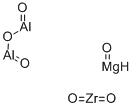BAUXITE , 99% , 1318-16-7
PRODUCT Properties
| Density | 2.275 |
| form | Dust (red, brown, or yellow) |
| color | Buff to orange solid |
| Odor | odorless |
| Dielectric constant | 2.5(Ambient) |
| Stability: | Stable. |
| CAS DataBase Reference | 1318-16-7 |
| EPA Substance Registry System | Bauxite (1318-16-7) |
Description and Uses
Bauxite is the major source of aluminum sesquioxide (alumina, Al2O3) worldwide. Bauxite is
a soft and red clay, rich in alumina. From a geological point of view bauxite is defined as a residual
sedimentary rock in the laterite family that results from in situ superficial weathering in moist tropical climates of clays, clayey limestones, or high-alumina-content silicoaluminous
igneous and metamorphic rocks containing feldspars and micas.
Bauxite is a sedimentary rock, so it has neither a precise
definition nor chemical formula. From a mineralogical point of view, bauxite is mainly composed of hydrated alumina minerals such as gibbsite [Al(OH)3 or Al2O3.3H2O, monoclinic] in
recent tropical and equatorial bauxite deposits, while boehmite [AlO(OH) or Al2O3.H2O, orthorhombic] and, to a lesser extent, diaspore [AlO(OH) or Al2O3
.H2O, orthorhombic] are the
major minerals in subtropical and temperate bauxite old deposits. The average chemical
composition of bauxite is 45 to 60 wt.% Al2O3
and 10 to 30 wt.% Fe2O3, the remainder consisting of silica, calcia, titanium dioxide, and water.
Absorbent catalysts
Safety
| Toxicity | TCLo ihl-hmn: 22 mg/m3/5Y GTPZAB 4,28,60 |





